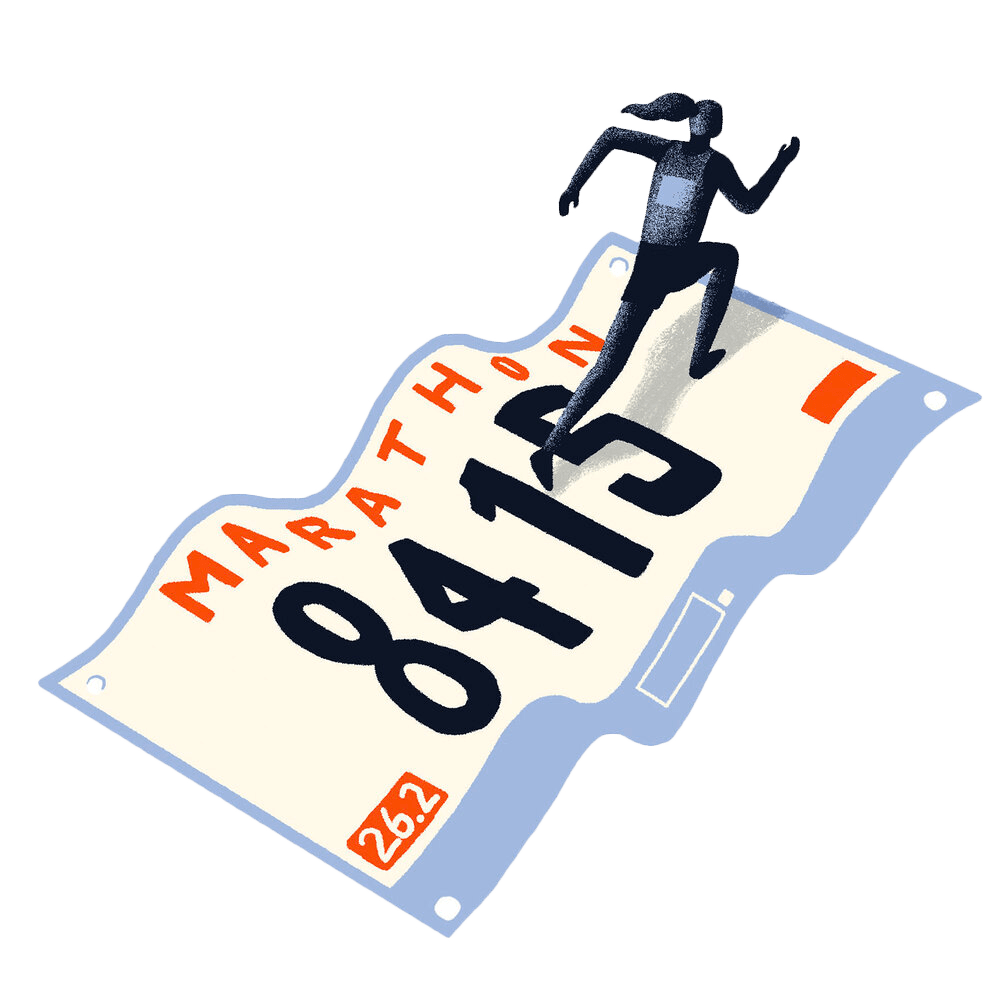How to Do It All
From solving a Rubik’s Cube® in a matter of seconds to starting a podcast, Techers offer tips on how to do just about anything.
by Renée Olson


How to Start a Podcast
The thing that shocked Richard Hsu (BS ’89) most about starting his interview podcast: how many guests actually said “yes.” That list is more than 200 and growing, and features marquee names like Steve Wozniak and Mark Cuban. Hsu, a former law firm partner who is now a legal recruiter with Major, Lindsey & Africa in San Francisco, offers insight about what he’s learned by building his two-time award-winning podcast, Hsu (pronounced “shoe”) Untied.
Follow Your Heart
“I reached out to Caroll Spinney, the voice behind Big Bird and Oscar the Grouch, because I thought, ‘Oh man, that would be so cool to interview him.’ That was my only criterion. He was probably my favorite interview because he was a delightful gentleman, so fun and so entertaining. It reminded me of childhood. He sang for me and everything.”
Be Ready for Anything
Hsu balances patience and nimbleness, like the time he’d been waiting two years for a high-profile subject only to get a call at 7:30 one morning asking if he could do the interview in 45 minutes. The Spinney interview offered a milder version of that challenge. “I somehow got in touch with his wife,” Hsu says. “She tells me, ‘We’re traveling in an RV across the country right now. Call me in a month.’”
Don’t Prepare for the Interview
“What works best for me is not to have a list of questions. I ask the kinds of natural, organic questions that I would ask you over dinner.”
Rope in Caltech Alumni
“I’ve interviewed pioneering origami artist Robert Lang (BS ’82, PhD ’86), food scientist and writer Harold McGee (BS ’73), and Caltech trustee Bill Gross (BS ’81), entrepreneur and founder of IdeaLab.com. Of course, they were all great.”
Think Beyond the Bottom Line
“If you’re looking to make money, that’s going to be really hard. My only goal from the very beginning has been to do something I really enjoy. So it’s never felt like a job for me.”
How to Manage Your Mess
Former mechanical engineer and misplaced–cell phone survivor Meghan Smith (BS ’02) owns OrganizeSmith, a Phoenix-based company that offers solutions for the clutter-weary. Her engineering background helps: “Organizing is about being able to think analytically and logically,” she says, “then coming up with creative solutions.”
Don’t Confuse Organizing with Downsizing
Organizing doesn’t make more space, Smith says. “When you put stuff in a container, the container takes up more space than just shoving your stuff in the corner. What organizing does is make it easier to find everything—and a good system makes it easier to keep things tidy.”
Master the Art of Neatness
Smith thrives on creating order out of chaos. “I’m able to take the bigger picture and chop it up into smaller, more manageable pieces,” she says. “It’s a lot of space management—being able to visualize things, problem-solving, and coming up with unique and creative solutions.” Sometimes that’s helping a cook whittle down her spatula collection by keeping only four for the countertop. Or advising a tech enthusiast that he doesn’t need to hold on to a computer from the 1980s. Or digitizing photos and receipts to clear off the dining room table for meals. But the client always has a say. “Sometimes you just have to talk it through,” Smith says.
Repurpose, Save Space, Share the Love
Repurposing has worked especially well for clients who are dealing with the emotional weight of a deceased relative’s belongings. “Some people create ‘memory bears,’ which are stuffed animals made from loved ones’ apparel,” Smith says. “Another person took her family quilt and cut pieces to fit into shadow boxes. It had been in a chest, buried under stuff. It wasn’t being seen, it wasn’t being loved. Now it is.”
Define Your Space
“My crafting supplies have to fit on one shelving unit, and if they don’t, something’s got to go.”
Job Well Done
“I’ve had customers who keep greeting cards that just say ‘Love, Mom.’ It’s a greeting card. Its job is to say, ‘Hey.’ Did it? Then let it go.”


How to Train for a Marathon
Spurred on by the 2008 Beijing Olympics, Riya Suising (BS ’88), whose longest run at that point had been five miles, gave herself less than a week to train for her first half-marathon. “Now I race almost every weekend,” says Suising, a massage therapist and CEO of Silicon Valley Body Renewal. And she trains others to meet that 26.2-mile mark.
Find Your People
“After I did two half-marathons, I thought, ‘Oh, I can do this; I can train myself,’” Suising says. “But then I thought, ‘I want to shoot for a full marathon,’ and I knew that I needed some help.” She joined the Leukemia and Lymphoma Society’s Team in Training, which offers volunteer coaches and mentors in return for raising money for cancer research.
A Trio of Training Methods
Speed training involves running intervals on a track “at a strong speed, about 80 or 95 percent of your maximum,” Suising says, and then resting for three minutes before repeating the sequence for a total of three miles of “hard work.” (By the way, resting doesn’t mean standing, but rather staying in motion and allowing your body to recover.) Tempo training involves running a simulated five-mile race as part of a group, keeping a steady pace. Endurance training is what helps “condition your body” by adding two miles a week until you reach 20 miles.
Don’t Let Maturity Stop You
Once people reach middle age, it’s common to put a marathon on a bucket list, despite the fact that running a full marathon “is like torture,” Suising says. While older athletes lack the strength of the young, they’re better at learning to pace themselves for endurance sports.
On Your Feet
“Shoes are the most important equipment,” says the budget-minded Suising, who ran her first half-marathon in “gym shoes” and the next in cheap running shoes. “Now I’ve ended up with some actual foot issues, which are limiting my performance.” She now swears by stability (normal gait) running shoes with maximum cushioning for angry metatarsals.
Know Your Limits
Suising has no interest in tackling a 100-miler, which can eat up 20 to 30 hours. Says Suising, “I really prefer to finish a race, eat a good dinner, have a warm shower, and then sleep in a bed.”
Fuel Up
The night before a run, Suising likes carb-loading. Her go-to? Denny’s $4 All-You-Can-Eat Pancakes.
How to Train Your Puppy
Attorney Anita Choi (BS ’04) and her husband, Chris Flatt (BS ’04), a lead engineer for Google Assistant, have trained four puppies for Canine Companions for Independence (CCI), a national organization that provides assistance dogs. Here, Choi shares the lessons learned from raising CCI puppies.
Pup Starts
“We start training as soon as we get the puppies at eight weeks, working on ‘sits’ and ‘downs.’ And we cuddle with them and play with their paws and ears, and make sure they are well socialized from an early age.”
Food for Thought
Training treats don’t always have to be special. Choi and Flatt put regular kibble in a food pouch that they carry around for day-to-day training activities. Sometimes, they use “high-value treats,” such as sausage or tasty dog biscuits, when they want to teach a difficult command or train in distracting environments.
Steady Hand
Work on one command at a time. And remember, consistency is everything. “If you’re consistently praising the dog for the behavior you want,” Choi says, “the dog will learn over time.”
Downward Greeting Dog
Dogs that meet new humans with a leap? “We call that the excitable greeting,” Choi says. “It’s one of the harder habits to break.” Why? Because environments aren’t always easily controlled—sometimes the “excitable greeting” can be the result of the activity around a dog at any given time. In Choi’s and Flatt’s Canine Companions classes, designated distractors would vie for the dogs’ attention during training. “If the dogs don’t interact during those distractions, you give them a treat right away,” Choi says. “And if they try to interact, you give them a correction—a quick tug on the leash to say, ‘No.’”
Train Your Friends
“Your friends come over, the dog gets really excited, and then they start petting the dog when it jumps on them. That reinforces the wrong behavior. Instead, we ask our friends to look away, not to move, and not to give the dog attention.”


Tyson Mao (BS ’06) took two hours to conquer his first Rubik’s Cube while working at a summer camp in 2003. “I want to say it was July 24, 2003, if indeed July 24 was a Thursday,” he says. (Editor’s note: He’s right, of course.) Today, he’s a cofounder of the World Cube Association and 2005 world-record holder for fastest Rubik’s Cube solved while blindfolded—one minute and 58.32 seconds. Mao, who is also a product manager at Google, offers advice for aspiring cube masters.
Upgrade Your Rig, Not Your Budget
“You can buy fantastic cubes now for less than $10 each on the internet, and they turn fabulously. Back in 2003, you would have to break a cube in, you’d have to prepare it, and it just didn’t turn as well. Now a faster-turning cube allows different types of turning techniques.”
Know the Definition of Fast
Mao notes that his record for solving a cube without a blindfold is 12.75 seconds. (In a speed solver’s world, that’s not considered very fast—the record is under four seconds, and most of the top speed solvers can routinely solve the Rubik’s Cube in under eight.) Speed solvers who can complete the cube in under 20 seconds are averaging three to five turns per second.
Do the Math
Most speed solvers solve the cube using the Fridrich Method. Named for its inventor, Jessica Fridrich, the method consists of four seemingly simple steps: Solve a cross on one side; then solve two layers of the cube; then match all stickers on the last side; and then move the remaining eight pieces into place. This is not as simple as it sounds. “To match all the colors on the last side, you have to learn 57 different move sequences—or algorithms—that correspond to a unique pattern,” Mao says. “The last eight pieces take another 21 algorithms.” Mao teaches people a reduction of the Fridrich Method that optimizes the way most people commonly learn: Start with the top layer and work your way down.
Twist on the Shoulders of Giants
Spend some time with the experts. Mao, for instance, recently offered a video walkthrough to WIRED magazine online that is a good starting point. “Two people can spend the same amount of time working on a Rubik’s Cube, and one person will get 10 times better than the other person if they learn the right way,” Mao says. “So you can take all the information people have learned over the years and start from there instead of making all the mistakes my predecessors and I made.”
When not researching ultracold neutrons at Los Alamos National Laboratory, nuclear physicist Kevin Peter Hickerson (BS ’02, MS ’11, PhD ’13) likes to warm up crowds at comedy clubs. His advice to aspiring comics? Don’t even start. But if you must, here are his pointers.
Robot Jokes are Good—Science Not so Much
“I’ll do a bar show out in the desert, and if I say something about neutrons, the audience looks at me like I’m from outer space. But the one thing that almost all audiences like is a good robot joke. Everybody is scared of robots.”
Understand the Razor’s Edge
While academia is safe and honest, Hickerson says, comedy has to be honest but has to be sort of dangerous, too. He explains: “When you publish a scientific finding, everyone’s like, ‘Oh, you figured out what causes cancer, that’s great!’ Everybody’s happy; no one likes cancer. With comedy, you want to say something that’s true and funny, and you want to be the first person to say it out loud. That’s sometimes very dangerous, because you don’t want the joke to fall flat by going too far. The ultimate goal is to get the audience to laugh at your new dangerous truth without the crowd bringing out pitchforks. It’s a lot like trapeze artists: Everybody agrees they’re really fun to watch, but you know we’re watching because there’s some chance they might miss and fall. Trapeze artists get to have safety nets. Comedians don’t.”
Make Sure You Have Family Support
“My wife writes most of my jokes. I didn’t even know she had that talent, but she’s really good at it. The rest of my family members are the butt of the joke.”
Do It in Front of the Camera
“Some really good advice I got from [comedian] Joe Rogan—yes, I’m name-dropping—is to film yourself on stage. You’ll think you’re crushing it and everyone loves you, and then you’ll watch the tape and see everything you’re doing wrong, and you’ll cringe. Eventually you’ll get past this and start to enjoy yourself on stage.”


Renée Olson is a word person who cares as much about the visual environment words inhabit as the words themselves. She has been chief editor at magazines on parenting and children’s books in Manhattan and at two university magazines in New Jersey. She has a bachelor’s degree in journalism and a master’s in library science.


